Later Gator: 6 Alligator Myths Busted by an Expert
Every time a tragic and fatal encounter with an alligator hits the news, more myths and rumors about the reptiles resurface. And while these scaled, prehistoric, water-dwelling creatures can indeed appear fearsome, especially when all you see is a black snout and pair of gleaming eyes resting above the surface of a lake or inlet, they’re not nearly as terrifying as you may think, and many of the stories you’ve heard about them aren’t entirely true.
Videos by Outdoors
That’s why Kent Vliet, an alligator biologist and retired University of Florida faculty member, thinks it’s high time these tall tales were busted and replaced with cold, hard facts. Here are some of the most common myths about alligators he says you need to forget.
1. Alligators and crocodiles are essentially the same thing.
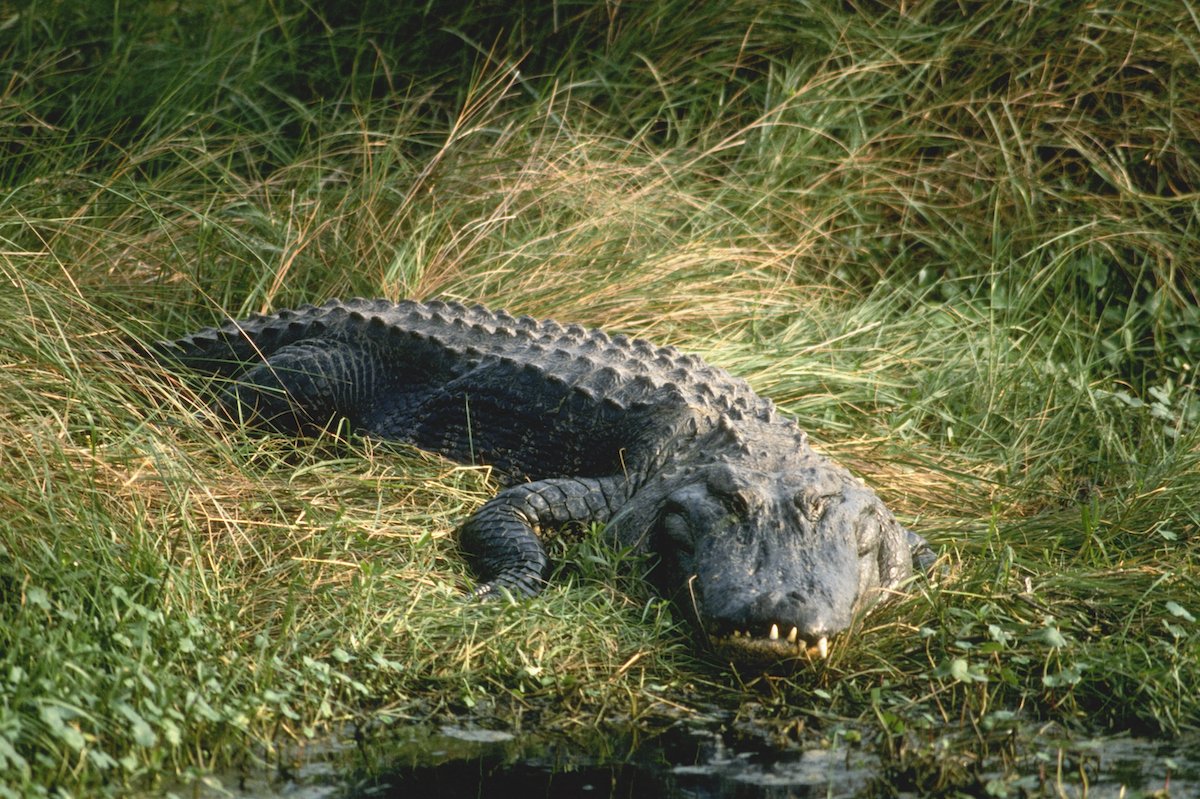
While the term alligator and crocodile are occasionally (and erroneously) used simultaneously by the general population, they aren’t the same thing. Yes, they are both members of the crocodilian order and have many things in common (they’re reptiles with large teeth who primarily live and hunt in and near water), but according to Vliet, “they haven’t shared a common ancestor in 90-95 million years.”
For starters, the two species don’t look the same. Alligators have wider snouts and teeth that rest inside their mouths when they are closed, as opposed to crocodiles’ long, skinny snouts with exposed teeth even when their mouth is closed. Maybe more importantly is the difference in their behavior. Alligators are far less aggressive than most crocodiles, but true crocodiles are few and far between in North America. There is just one native species of crocodile in the U.S. and two in Mexico.
2. Alligators are predatory toward humans.
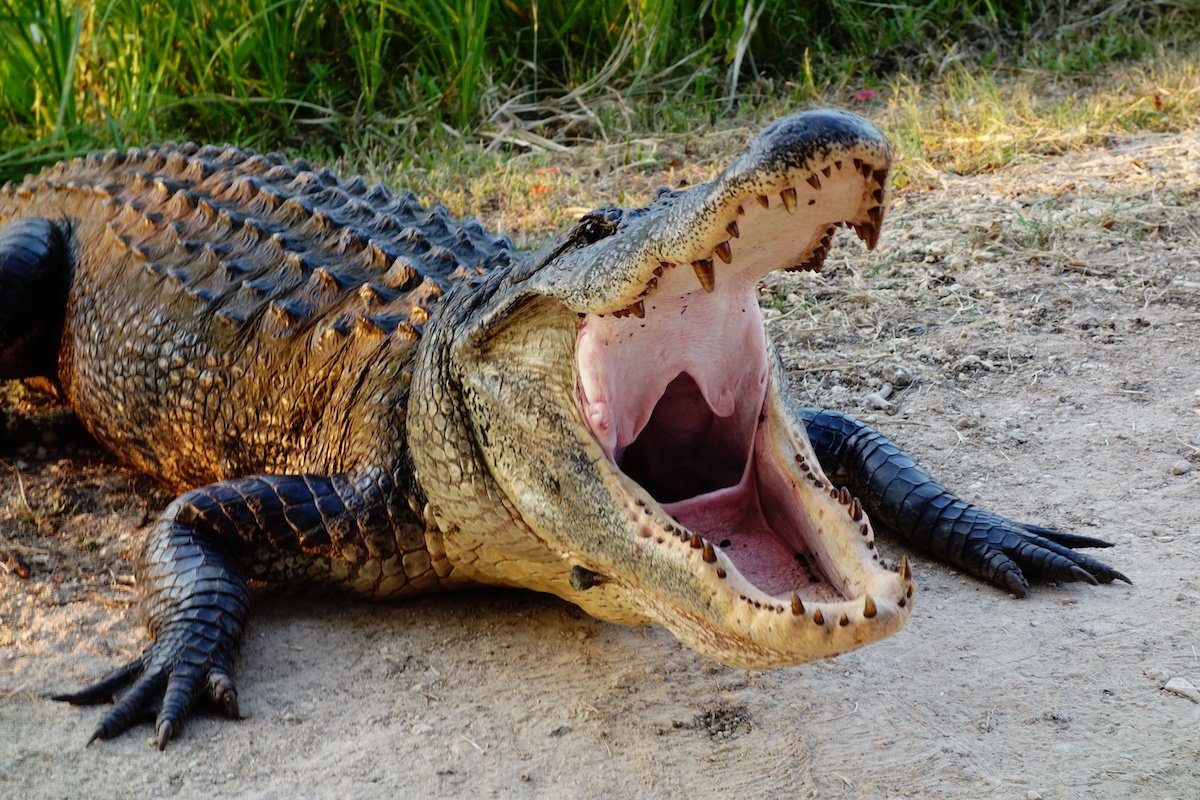
Compared to saltwater crocodiles in Australia or Nile crocodiles in Africa, alligators in the U.S. aren’t nearly as dangerous to humans. “They are big, they have extremely powerful jaws, and they do occasionally grab and very rarely kill people,” Vliet explains. “But that’s not a super common thing.”
In fact, there are only a dozen or so bites annually and about one or two fatalities every few years in Florida, which is home to approximately 1.3 million alligators. Other states, including South Carolina, and—more rarely—Louisiana, Texas, and Georgia, occasionally see attacks as well, but you’re much more likely to be struck by lightning or die from a bee sting than be attacked by an alligator.
3. If you are being chased by an alligator on land, run in a zig-zag pattern.
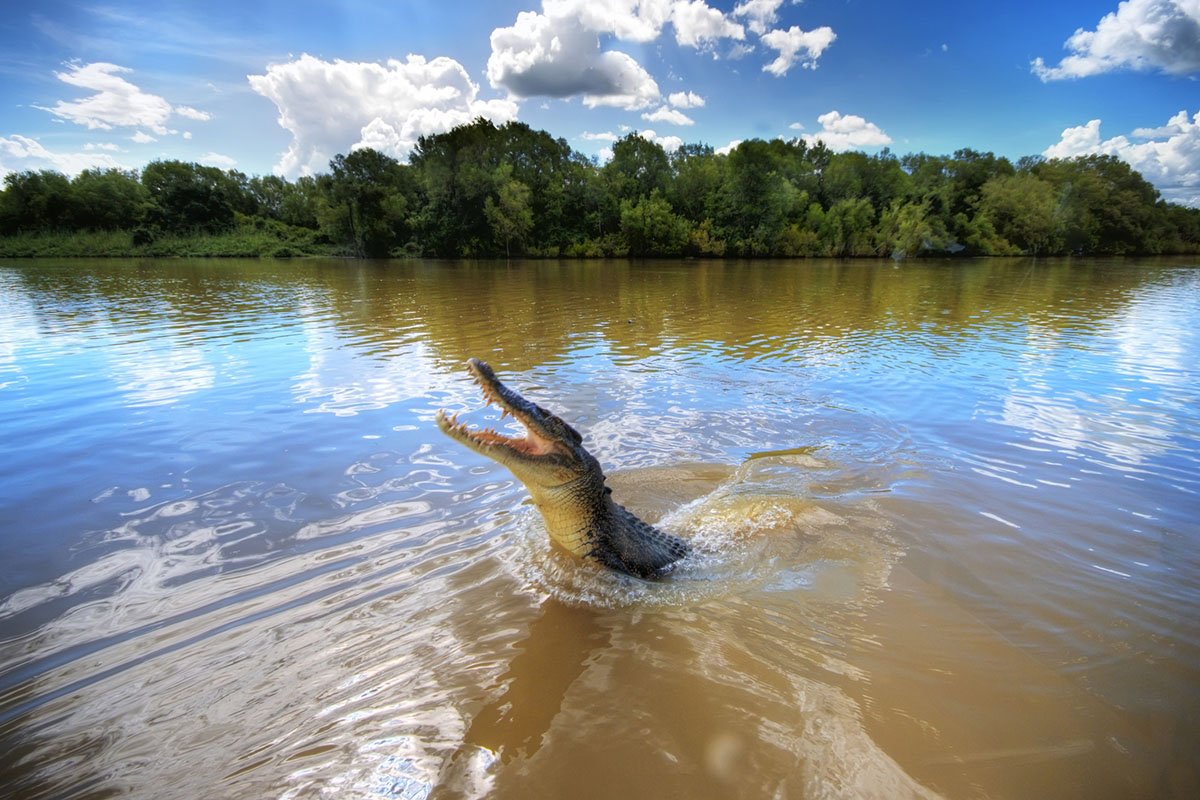
While alligators are certainly better swimmers than humans (they can move about 2-4 times faster than us in the water), they’re not quite so nimble on land. While they are entirely capable of fast movement on firm ground and can run up to 11 miles per hour, even on those stumpy legs, they can’t keep high-intensity activity up for very long.
If you get close enough and aren’t paying attention, an alligator could turn around, take a few steps, and take a bite out of you before you have the chance to escape, but as long as you keep a safe distance on land, you’re not in danger of being chased down by these reptiles. If one does start heading in your direction, don’t bother running in a zig-zag pattern; a straight line puts far more distance between you and the animal much faster.
“Almost anyone can outrun an alligator,” Vliet says.
4. Alligators can’t climb.
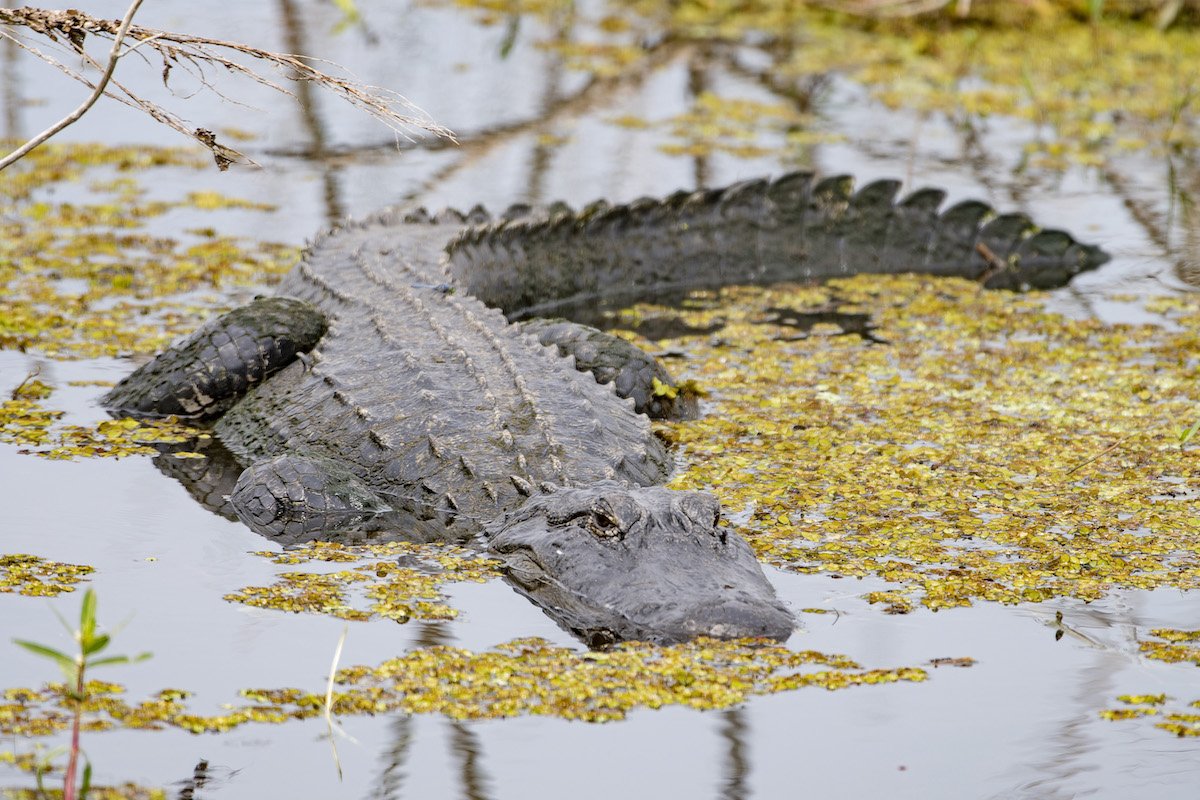
Alligators are not only adept climbers but they are also capable of jumping out of the water. Young alligators are typically the most active climbers, as they tend to scramble onto low branches near the water to get some sun, but females also climb up steep and sandy banks to find a good place to build a nest and lay their eggs.
The morale of the story? Don’t think that just because you’re on a low tree branch or at the top of an embankment that you’re out of reach of an alligator. They aren’t going to race up and take you by surprise, though. They are fairly slow and lumbering on steep surfaces.
5. Alligators have poor eyesight.
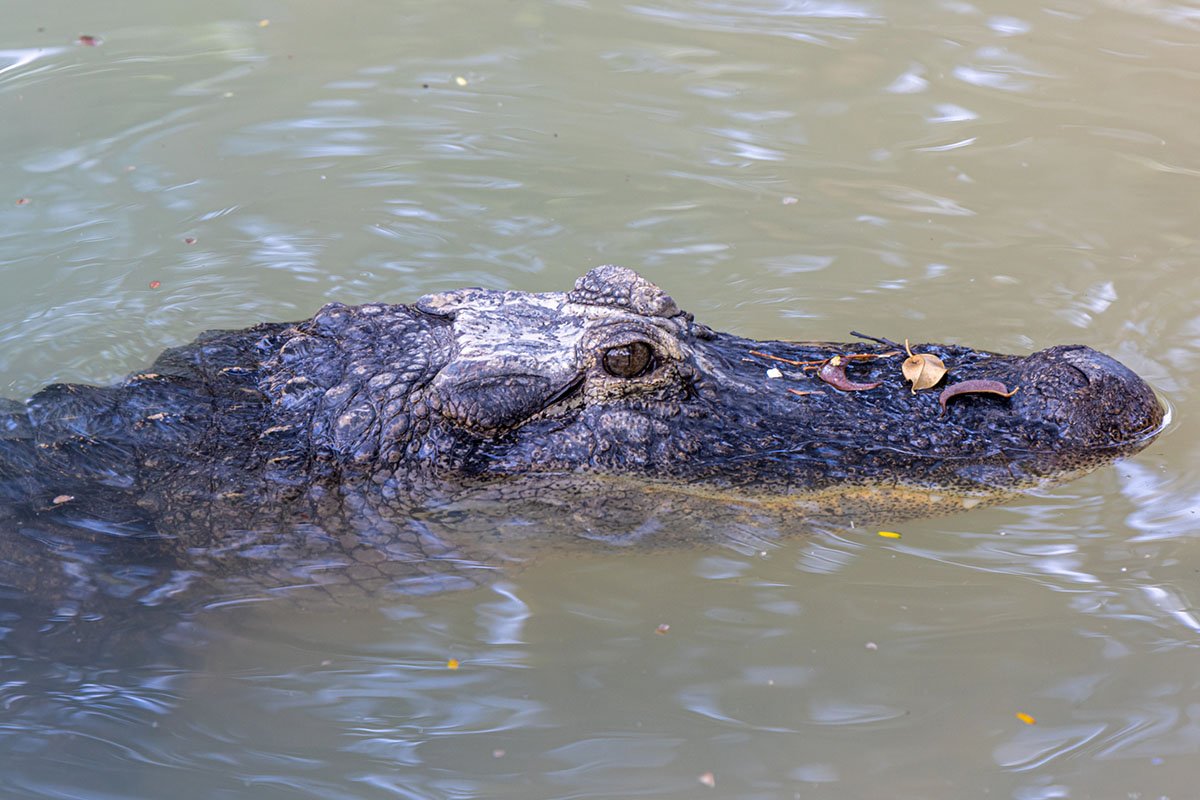
While alligators don’t have exceptional eyesight like many members of the animal kingdom, their eyesight is not particularly bad, either. In fact, Vliet says they can see about as well as humans during the day and better than we do at night, which means they’re excellent nocturnal predators.
Underwater is another story. Though they do have a clear “third eyelid” that protects their eyes when underwater, like an old pair of swim goggles that gets scratched up over the years, the older an alligator gets, the more those membranes cloud their vision. That means that when alligators dive underwater, it’s easy for them to lose sight of their prey, especially if the prey moves, and they may not be able to lock onto it again until they pop back above the surface and spot the potential snack again.
An alligator’s eyesight is best when its head is positioned just above the waterline. That, coupled with an internal GPS that isn’t terribly accurate, means that one way to escape an approaching gator is to swim away underwater so the animal can’t easily locate your position.
6. Alligators are massive reptiles.
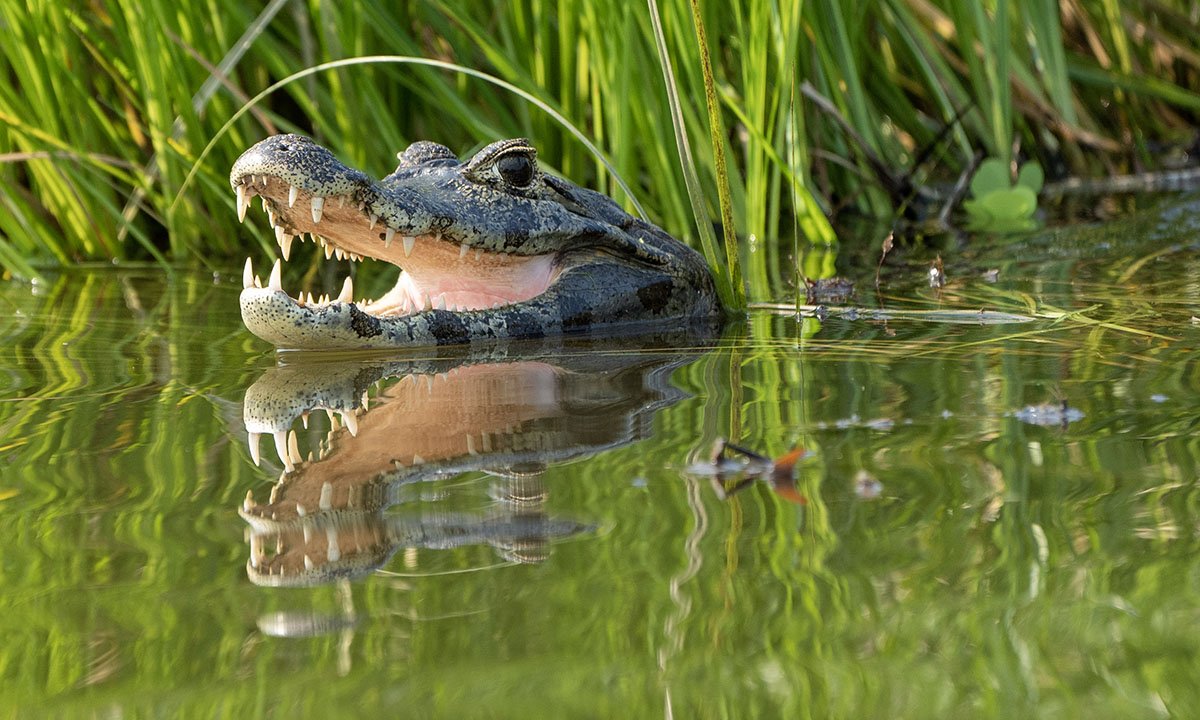
While it’s true that some alligators can reach lengths of up to 14 feet, most are much smaller, meaning ‘big fish’ stories aren’t just limited to fish. In fact, adult female alligators are typically between 7-9 feet long, while males tend to max out at 13.5 feet.
This doesn’t mean they’re not formidable creatures. However, if you hear someone carrying on about spotting a 15-foot alligator, it’s more likely that person misjudged the animal’s size than actually spotted a reptile that large, Vliet explains.
Source: https://outdoors.com/alligator-myths-busted-by-an-expert/







